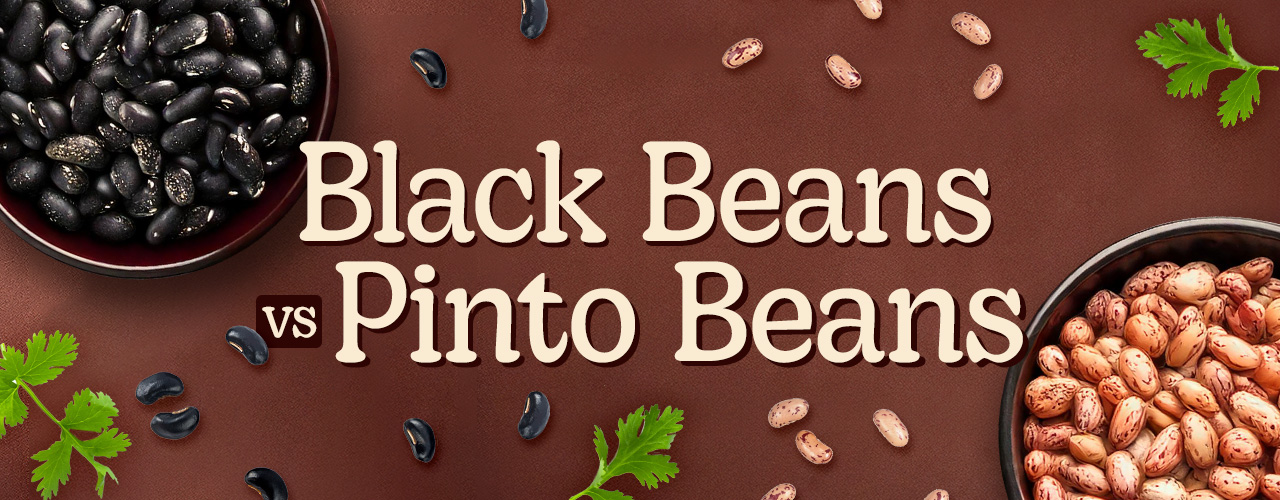Both black beans and pinto beans are versatile, nutrient-dense types of beans that offer a range of culinary possibilities, but they also have their unique differences. These differences are notable in terms of appearance, taste, preparation, and culinary uses. Black beans are smaller, glossier, and earthier in flavor, while pinto beans are larger and milder. Having a strong grasp of these beans' characteristics makes it much easier to incorporate them into your establishment's recipes and dishes, allowing you to create delicious courses that align in both taste and appearance.
Shop All Bulk Beans1. Taste
Regarding taste, both black beans and pinto beans offer unique flavors and textures that can enhance several dishes. Black beans have a slightly sweet and earthy flavor with a smooth texture, while pinto beans are more mild and creamy when cooked and sport a slightly nutty taste. Knowing the differences in taste and texture between black beans and pinto beans helps chefs and foodservice professionals choose the right bean for their recipes.
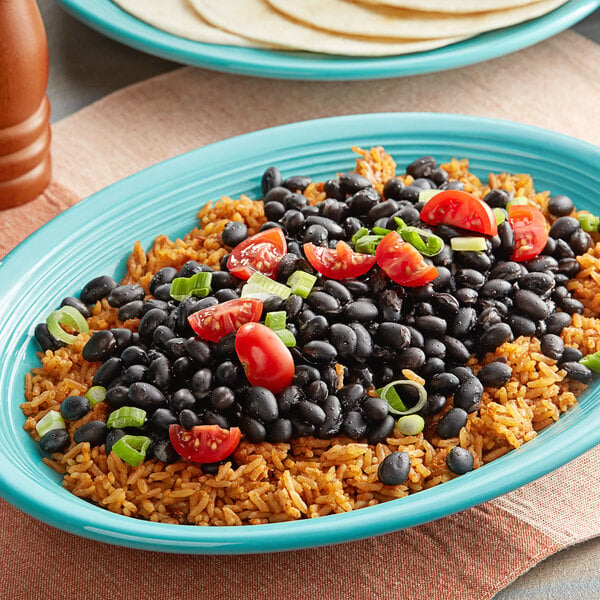
What Do Black Beans Taste Like?
Black beans have a rich, earthy flavor with a slightly sweet undertone. They are often described as having a meaty texture, making them a great addition to dishes where a hearty, substantial bean is desired.
When cooked, black beans have a creamy consistency that pairs well with a wide range of ingredients, from spices and herbs to meats and vegetables. Cooked black beans also maintain a firm texture while still being tender, making them perfect for adding depth and substance to soups, stews, salads, and dips.
What Do Pinto Beans Taste Like?
Pinto beans have a mild, earthy flavor, often described as a slightly nutty taste with a hint of sweetness. When cooked, pinto beans have a soft yet firm texture that holds up well in dishes with longer cooking times. Their taste is not overpowering, making them a suitable choice for dishes where the beans are meant to complement other ingredients rather than dominate the flavor profile.
2. Appearance
Outside of flavor, both black beans and pinto beans have distinct visual characteristics that can influence the presentation of your dishes. Black beans are small, round, and shiny with a deep black skin, while pinto beans are larger, oval-shaped, and speckled with a light pinkish-brown color that darkens when cooked. Presenting foods is all about matching the appearance and aesthetics of your ingredients to create a dish that is as visually appealing as possible. For this reason, understanding the physical characteristics of the two types of beans and how they appear is important before you start planning to include them in your recipes.
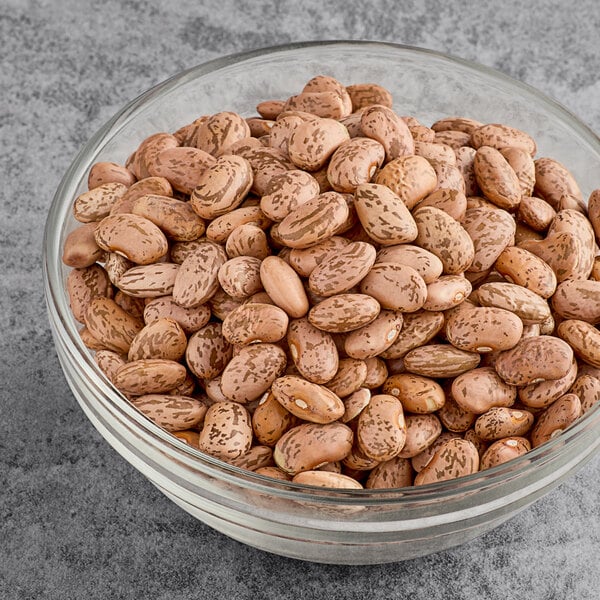
What Do Black Beans Look Like?
Black beans are small, oval-shaped legumes that typically range in size from about 1/4 to 1/2 inch in length. As their name suggests, these beans are typically black in color. They have a creamy white interior that turns dark purple after the cooking process. When dried, black beans have a hard, wrinkled outer skin that softens and expands when cooked. Cooked black beans also have a creamy consistency with a rich, dark color.
What Do Pinto Beans Look Like?
Pinto beans are oval-shaped and mottled with a beige background and reddish-brown speckles. The distinct coloring of pinto beans is where they get their name, as "pinto" translates to "painted" in Spanish. When dried, pinto beans have a smooth texture and a slightly wrinkled surface. They are typically small to medium in size, measuring about half an inch.
3. Preparation
Black beans and pinto beans, though similar in many ways, have subtle differences in how they respond to various cooking methods. While both can be prepared using similar techniques, such as stovetop cooking, pressure cooking, and slow cooking, the texture, flavor, and cooking times can vary slightly between the two. Both black beans and pinto beans require soaking before cooking, though pinto beans tend to cook faster than black beans.
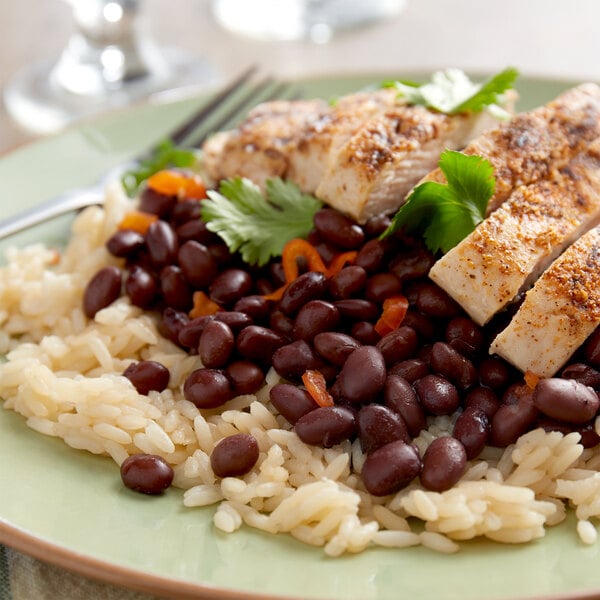
How to Cook Black Beans
- Rinsing and Soaking - Before cooking black beans, it is recommended to rinse them under cold water to remove any dirt or debris. Soaking the beans overnight in water can help reduce cooking time and improve their digestibility.
- Cooking Methods - Black beans can be cooked using various methods, including stovetop, pressure cooker, or slow cooker. Stovetop cooking typically takes 1 to 1.5 hours, while pressure cooking can significantly reduce the cooking time to about 20-30 minutes.
- Seasoning - To enhance the flavor of black beans, consider adding onions, garlic, and bay leaves during the cooking process. Season with salt and pepper to taste, and adjust the seasoning as needed before serving.
- Checking for Doneness - Black beans are done when they are tender but not mushy. To test for doneness, taste a bean to ensure it is cooked to your desired texture.
How to Cook Pinto Beans
- Sorting and Rinsing - Before cooking pinto beans, it is important to sort through them to remove any debris or damaged beans. Rinse the beans under cold water to remove any dirt or impurities.
- Soaking - While soaking is not always necessary, it can help reduce cooking time and improve the texture of the beans. To soak pinto beans, cover them with water and let them sit overnight. Alternatively, you can use a quick soak method by bringing the beans to a boil, removing them from heat, and letting them soak for one hour.
- Cooking Methods - Pinto beans can be cooked on the stovetop, in a slow cooker, or using a pressure cooker. When cooking on the stovetop, cover the beans with water or broth, bring to a boil, then reduce heat and simmer until the beans are tender. In a slow cooker, combine the beans with liquid and cook on low for several hours. Pressure cookers can significantly reduce cooking time, producing tender beans in a fraction of the time.
- Seasoning - Pinto beans have a mild flavor that pairs well with several seasonings. Common seasonings for pinto beans include onions, garlic, cumin, chili powder, and bay leaves. Adding salt too early in the cooking process can toughen the beans, so it is best to season them towards the end of cooking.
4. Uses
While both black beans and pinto beans are staples in many cuisines globally, they are often used in subtle different ways, depending on their taste profiles and cooking properties. Black beans are more commonly used in dishes like burritos, soups, and salads, while pinto beans are widely used for dishes like refried beans, chili, and bean dips.
Black Bean Uses
Black beans are a versatile ingredient that can be used in a variety of commercial food applications. Their earthy flavor and creamy texture make them a popular choice in many cuisines around the world. These beans are a great meat alternative, providing plenty of protein in vegan dishes.
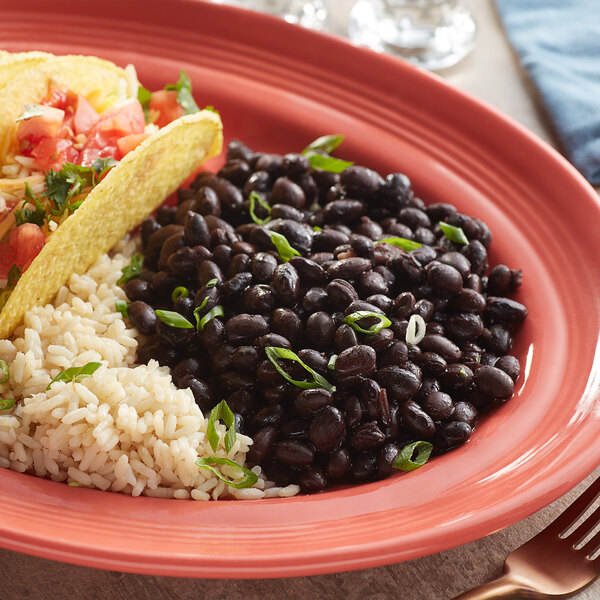
- Soups and Stews - Black beans are a staple ingredient in many soups and stews. They add a rich, hearty flavor and a satisfying texture to dishes like black bean soup, chili, and black bean stew.
- Salads - These beans are a great addition to salads, adding protein and fiber to make a more filling and nutritious meal. They pair well with ingredients like corn, avocado, tomatoes, and cilantro in dishes like black bean and corn salad or black bean quinoa salad.
- Tacos and Burritos - A classic filling for tacos and burritos, black beans add protein and flavor to popular Mexican dishes. They can be seasoned with spices like cumin, chili powder, and garlic to create a delicious and satisfying filling.
- Dips and Spreads - Black beans are fantastic for blending into creamy dips and spreads, such as black bean hummus or black bean dip. These versatile dips can be served with tortilla chips, vegetable sticks, or as a spread on sandwiches and wraps.
- Burgers and Veggie Patties - Black beans can be mashed and formed into patties to create vegetarian or vegan burger alternatives. These black bean burgers are not only delicious but also a healthier option for customers looking to reduce their meat consumption.
- Side Dishes - This type of bean can also be served as a side dish, either on its own or mixed with other ingredients like rice, vegetables, or salsa. They can be seasoned to complement a variety of main dishes and add a nutritious element to the meal.
Pinto Bean Uses
Having a mild, earthy flavor and creamy texture when cooked, pinto beans are a staple ingredient in many cuisines around the world. From soups and stews to salads and dips, pinto beans can be incorporated into many dishes to add flavor, protein, and texture.
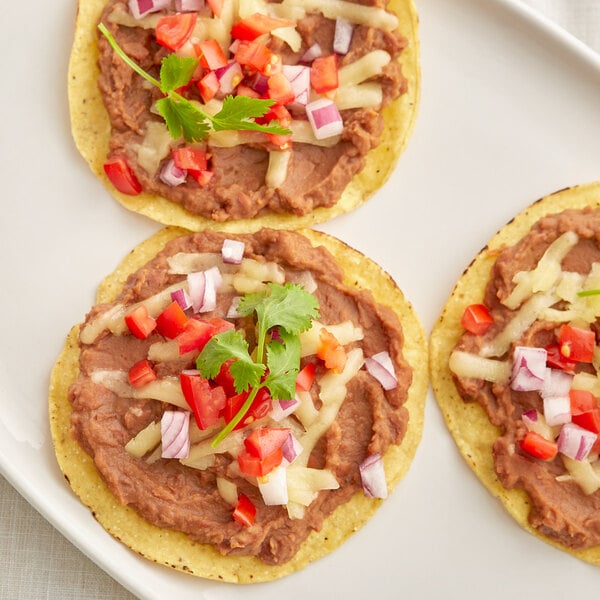
- Soups and Stews - Pinto beans are excellent additions to soups and stews. Their soft texture and mild flavor blend well with other ingredients, enhancing the overall taste and providing a hearty and nutritious element to the dish.
- Salads - These beans are great in salads to add protein and fiber. They pair well with vegetables, herbs, and dressings, creating a satisfying and nutritious salad option for customers looking for a healthy meal.
- Baked Beans - Commonly used in baked bean recipes, pinto beans' creamy texture and ability to absorb flavors make them an ideal choice for this classic dish. Baked beans with pinto beans are a popular side dish at barbecues, picnics, and other casual dining events.
- Hispanic Cuisine - Pinto beans are a staple ingredient in traditional Hispanic cuisine. They are commonly used in dishes such as refried beans, burritos, and chili con carne, adding a creamy texture and earthy flavor.
- Dips and Spreads - Pinto beans can be mashed or pureed to create delicious dips and spreads. Pinto bean dip is a flavorful and healthy snack option that can be served with tortilla chips, crackers, or fresh vegetables, making it a versatile and crowd-pleasing appetizer choice for commercial settings.
5. Nutrition
Both black beans and pinto beans provide valuable sources of plant-based protein, fiber, and essential vitamins, but they differ in several key nutritional aspects that may influence the way you construct your menu. Black beans tend to have slightly higher fiber content, while pinto beans are more rich in folate and other vitamins.
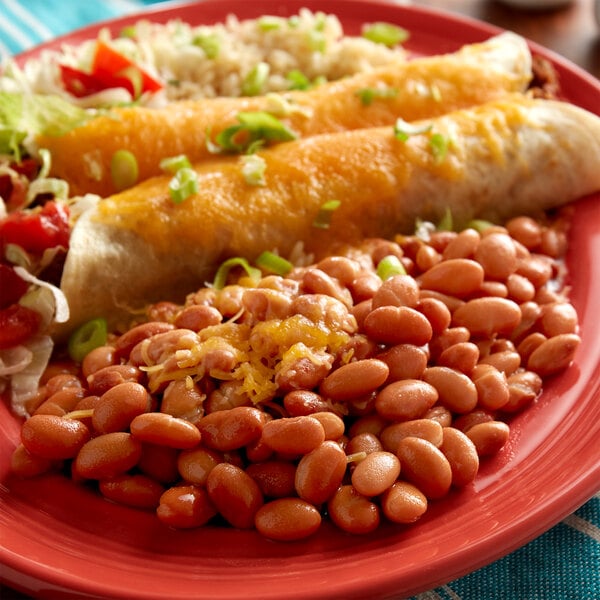
Black Beans Nutrition
Black beans are a rich source of plant-based protein, making them an excellent choice for vegetarian or vegan menu options. A one-cup serving of cooked black beans contains a whopping 15 grams of protein. Moreover, black beans are high in dietary fiber, supporting digestive health. In terms of micronutrients, black beans are a good source of several essential vitamins and minerals. They are particularly rich in iron, magnesium, and potassium.
Pinto Beans Nutrition
Pinto beans also offer significant nutritional value, although their profile differs slightly from black beans. A one-cup serving of cooked pinto beans contains approximately 15 grams of protein, similar to black beans. Pinto beans are also high in dietary fiber, with around 15 grams per cup, aiding in digestion. In terms of vitamins and minerals, pinto beans are a good source of folate, manganese, and phosphorus.
6. Origin
Black beans and pinto beans have a similar historical lineage, dating back many years to pre-Columbian times in Latin America. Native to the Americas, both types of beans were a staple in the diet of indigenous peoples in regions such as Central and South America.
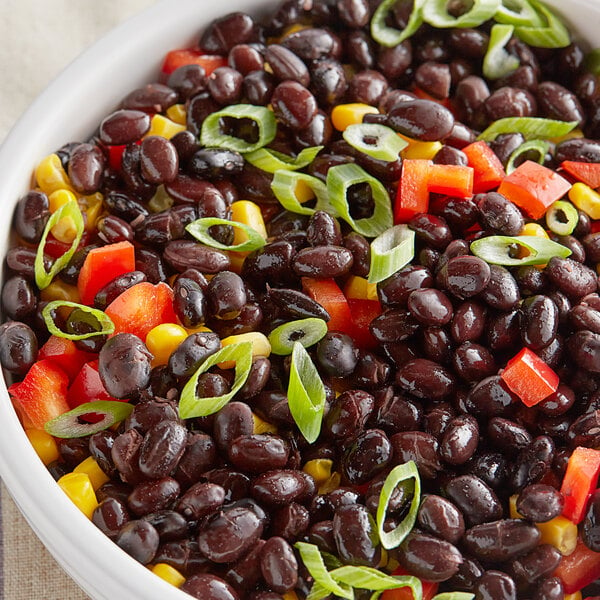
Black Bean Origin
Originating from Central and South America, specifically in regions like Mexico, Guatemala, and Peru, black beans have been a staple in the diets of indigenous peoples for centuries. These legumes were a significant part of the traditional Mesoamerican diet and were even considered sacred by the ancient Aztecs and Mayans. Black beans were introduced to Europe by Spanish explorers during the 15th century, and their popularity spread to other parts of the world through trade routes. Today, black beans are cultivated in various countries worldwide, including the United States, Brazil, and India.
Pinto Bean Origin
Pinto beans originated in North and South America, particularly in regions of modern-day Mexico and the southwestern United States. They were a staple in indigenous diets due to their high nutritional value and ability to thrive in diverse climates. Over time, they spread across the Americas and became an essential component of Mexican, Tex-Mex, and southwestern cuisine, where they remain popular today.
Ultimately, the choice between black beans and pinto beans comes down to personal preference and the specific dishes you plan to create. Both beans offer versatility, flavor, and nutritional benefits that can enhance the quality of your menu offerings and appeal to a diverse customer base. Experimenting with different bean varieties in your recipes can help you discover new flavors and textures that elevate your culinary creations to the next level.
